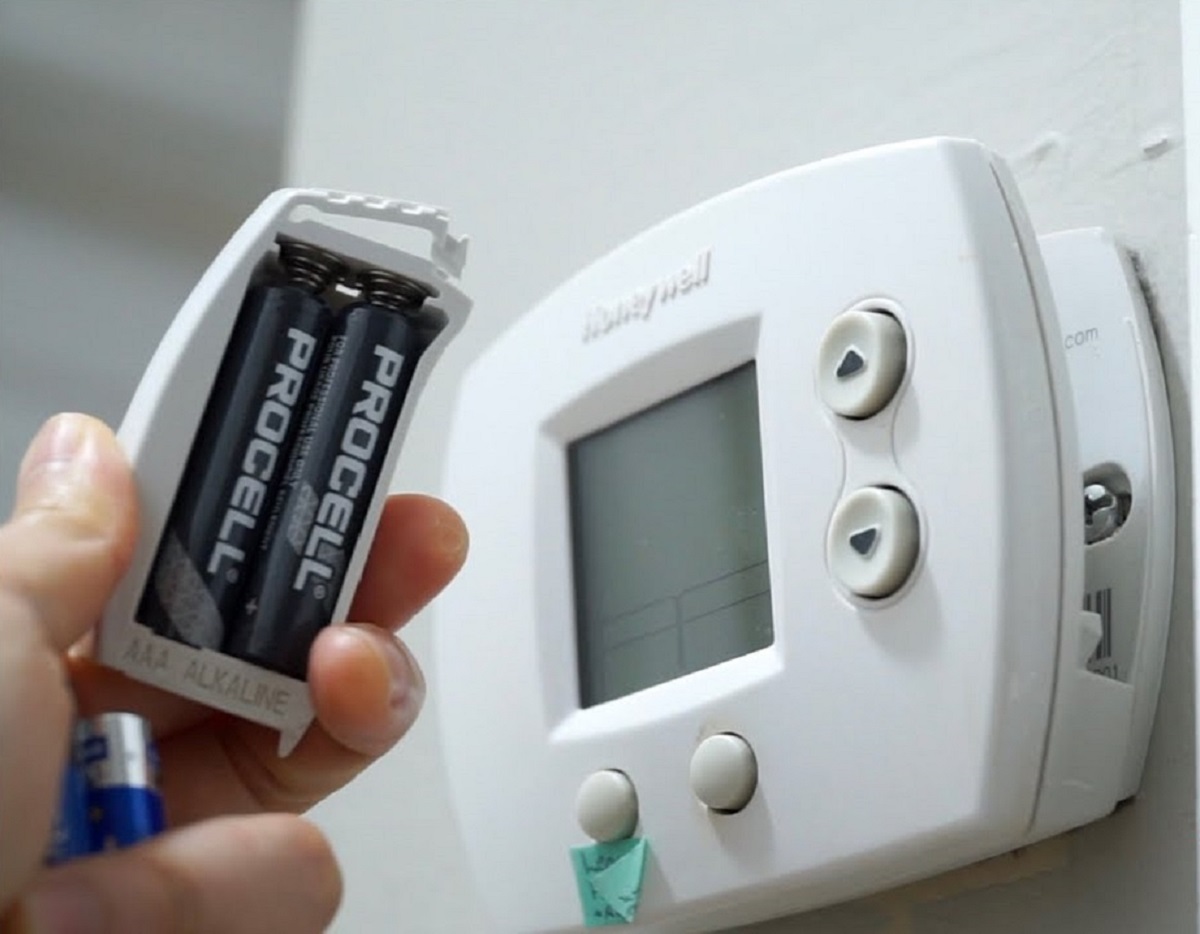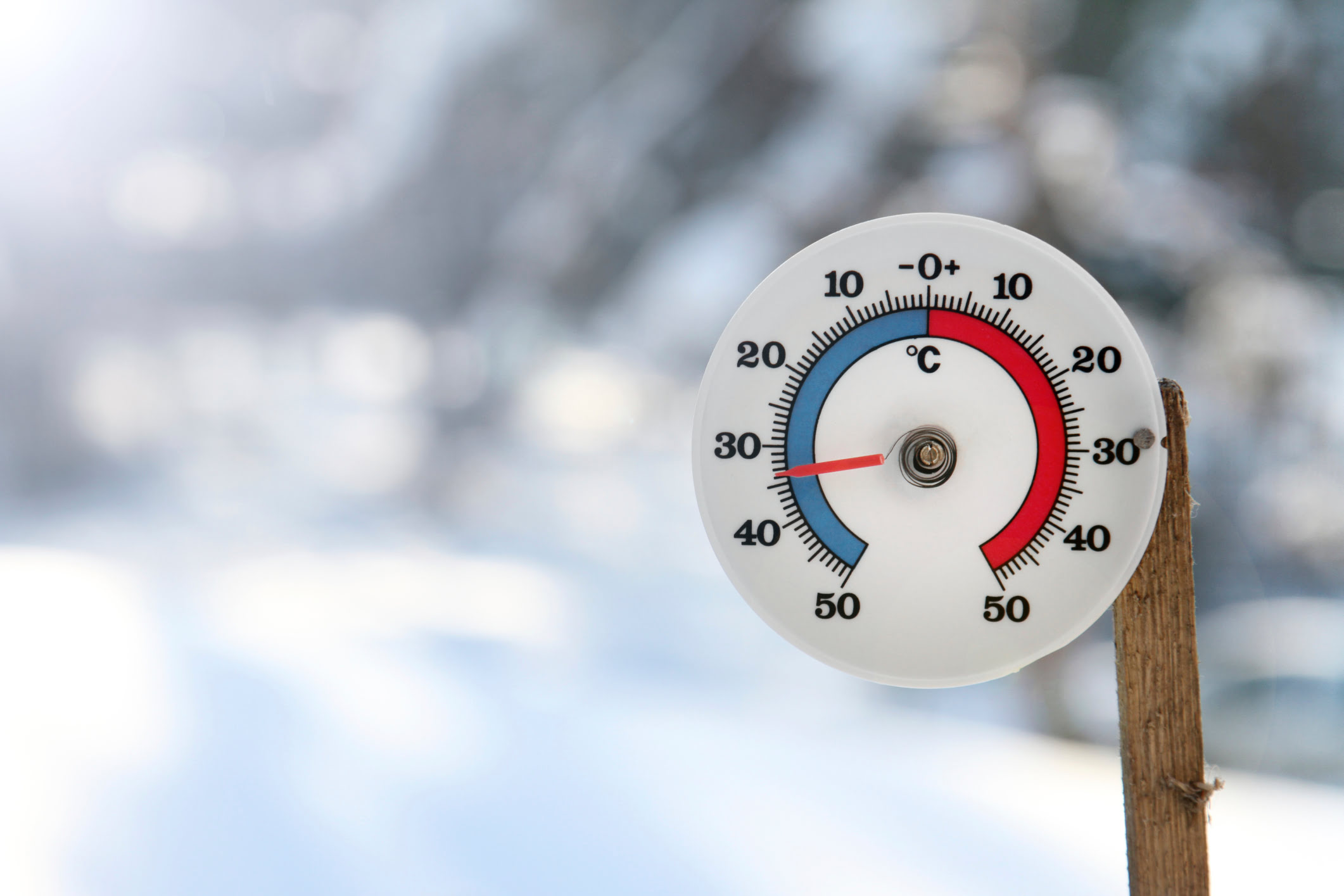Home>Home Appliances>Home Automation Appliances>Where To Put Thermostat Probe In Vivarium


Home Automation Appliances
Where To Put Thermostat Probe In Vivarium
Modified: January 4, 2024
Learn the best placement for the thermostat probe in your vivarium for optimal home automation appliance performance. Discover expert tips and techniques.
(Many of the links in this article redirect to a specific reviewed product. Your purchase of these products through affiliate links helps to generate commission for Storables.com, at no extra cost. Learn more)
Introduction
Creating a thriving environment for your vivarium inhabitants involves careful consideration of various factors, including temperature regulation. The placement of the thermostat probe within the vivarium plays a crucial role in maintaining the ideal temperature for its inhabitants. In this article, we will delve into the significance of proper thermostat probe placement in vivariums, explore the best placement strategies for different types of vivariums, and consider essential factors to ensure optimal temperature regulation. Whether you are nurturing a lush tropical habitat or a desert landscape within your vivarium, understanding the nuances of thermostat probe placement is essential for the well-being of its inhabitants. Let's embark on a journey to uncover the secrets of achieving the perfect thermostat probe placement in vivariums.
Key Takeaways:
- Proper thermostat probe placement is crucial for maintaining stable temperatures in vivariums, promoting the well-being of its inhabitants and ensuring energy efficiency.
- Different types of vivariums require specific probe placements to mimic their natural habitats, fostering a thriving environment for diverse species.
Read more: Where To Put A Dehumidifier
Importance of Proper Placement
Proper placement of the thermostat probe in a vivarium is paramount for maintaining a stable and conducive environment for its inhabitants. The thermostat probe serves as the sensory organ of the heating system, relaying crucial information to the thermostat to regulate the temperature effectively. Incorrect placement can lead to temperature differentials within the vivarium, potentially jeopardizing the well-being of its occupants. By ensuring the probe is strategically positioned, you can create an environment that closely mimics the natural habitat of the vivarium’s inhabitants, promoting their health and vitality.
Additionally, precise probe placement contributes to the overall efficiency of the heating system. When the probe is accurately situated, the thermostat can accurately gauge the temperature within the vivarium, preventing unnecessary fluctuations and ensuring consistent heating. This not only fosters a stable environment for the inhabitants but also promotes energy efficiency, as the heating system operates optimally without unnecessary spikes or drops in temperature.
Furthermore, the proper placement of the thermostat probe facilitates the prevention of potential hazards. By situating the probe in an area that accurately reflects the vivarium’s overall temperature, you can avert the risk of overheating or underheating, safeguarding the well-being of its inhabitants and preserving the integrity of the vivarium ecosystem.
In essence, the proper placement of the thermostat probe is pivotal in creating a harmonious and sustainable environment within the vivarium. By understanding the significance of precise probe placement, you can optimize the temperature regulation process, mitigate potential risks, and nurture a thriving habitat for your vivarium’s inhabitants.
Types of Vivariums
Vivariums encompass a diverse array of simulated habitats, each tailored to meet the unique needs of its inhabitants. Understanding the distinct characteristics of various vivarium types is essential for determining the most suitable placement for the thermostat probe. Let’s explore some common types of vivariums and their defining features:
- Tropical Vivariums: These vivariums replicate the lush, humid environments found in tropical regions, often housing amphibians, tropical plants, and small reptiles. They feature abundant vegetation, moisture, and moderate to high temperatures, creating a verdant and vibrant habitat for their inhabitants.
- Desert Vivariums: Designed to mimic arid desert landscapes, these vivariums accommodate species that thrive in dry, warm climates. They typically include cacti, succulents, and reptiles adapted to arid conditions, requiring ample heat and minimal humidity to thrive.
- Woodland Vivariums: Woodland vivariums emulate the ecosystems of wooded areas, housing species such as woodland reptiles, small mammals, and diverse flora. They feature moderate temperatures, varying humidity levels, and a rich assortment of plant life, providing a habitat reminiscent of forested regions.
- Aquatic Vivariums: These vivariums are designed to accommodate aquatic species, including fish, amphibians, and aquatic plants. They feature a water element, such as a pond or aquarium, and require precise temperature regulation to support the diverse life thriving within the aquatic environment.
Each type of vivarium presents distinct temperature and humidity requirements, influenced by the natural habitats they seek to replicate. By categorizing vivariums based on their unique characteristics, we can tailor the placement of the thermostat probe to align with the specific needs of the vivarium’s inhabitants, ensuring optimal temperature regulation and environmental fidelity.
Place the thermostat probe in the middle of the vivarium, away from direct heat sources and drafts, to get an accurate temperature reading for your reptile or amphibian.
Best Placement for Different Types of Vivariums
Optimal thermostat probe placement varies across different types of vivariums, aligning with the specific environmental requirements of each habitat. Let’s explore the best placement strategies for various vivarium types to facilitate precise temperature regulation:
- Tropical Vivariums: In tropical vivariums, the thermostat probe should be positioned in a central location, away from direct heat sources such as basking lamps or heating pads. Placing the probe in a shaded area amidst the vegetation ensures an accurate representation of the overall ambient temperature, crucial for maintaining the required warmth and humidity levels.
- Desert Vivariums: For desert vivariums, the thermostat probe should be situated in close proximity to the primary heat source, such as a heat mat or ceramic heat emitter. This placement allows the probe to accurately monitor the elevated temperatures essential for creating a desert-like environment, ensuring that the inhabitants receive the warmth they require.
- Woodland Vivariums: In woodland vivariums, the thermostat probe should be placed in a shaded area, away from direct exposure to heating elements. This location enables the probe to capture the ambient temperature and humidity levels prevalent in the woodland habitat, promoting a balanced and comfortable environment for the inhabitants.
- Aquatic Vivariums: When setting up an aquatic vivarium, the thermostat probe should be submerged in the water, positioned at a depth that reflects the average water temperature. Placing the probe within the aquatic environment allows for precise monitoring and regulation of the water temperature, vital for sustaining the health and well-being of the aquatic inhabitants.
By tailoring the placement of the thermostat probe to correspond with the specific requirements of each vivarium type, you can effectively recreate the natural conditions essential for the thriving of its inhabitants. This strategic placement ensures that the heating system responds accurately to the vivarium’s environmental dynamics, maintaining the ideal temperature and humidity levels crucial for the well-being of its occupants.
Factors to Consider
When determining the placement of the thermostat probe in a vivarium, several crucial factors must be taken into account to ensure precise temperature regulation and the well-being of its inhabitants. Let’s explore the key considerations that influence the optimal placement of the thermostat probe:
- Habitat Layout: The layout of the vivarium, including the distribution of heating elements, shelters, and water features, significantly impacts the placement of the thermostat probe. Understanding the vivarium’s layout is essential for identifying strategic locations that accurately represent the overall temperature and humidity levels.
- Natural Behavior of Inhabitants: Consider the natural behavior of the vivarium’s inhabitants, including their preferred basking spots, hiding areas, and activity patterns. Placing the thermostat probe in areas frequented by the inhabitants ensures that the temperature regulation aligns with their behavioral needs.
- Temperature Gradient: Creating a temperature gradient within the vivarium is often essential to accommodate the diverse temperature requirements of its inhabitants. By situating the thermostat probe to capture the gradient’s range, you can ensure that the heating system responds dynamically to maintain the desired temperature differentials across the habitat.
- Humidity Levels: Certain vivariums, such as tropical and aquatic habitats, require precise regulation of humidity levels in addition to temperature control. Positioning the thermostat probe in areas that reflect the habitat’s humidity dynamics is crucial for sustaining the optimal moisture levels essential for the well-being of its inhabitants.
- Heat Source Proximity: The proximity of the thermostat probe to heat sources, such as heat mats, ceramic emitters, or basking lamps, directly influences its ability to monitor and regulate the temperature effectively. Strategic placement ensures that the probe captures accurate temperature readings without being unduly influenced by direct heat exposure.
By carefully considering these factors, you can determine the most suitable placement for the thermostat probe within the vivarium, fostering an environment that harmonizes with the natural needs of its inhabitants and supports their overall well-being.
Read more: Where To Put A Humidifier
Conclusion
Optimizing the placement of the thermostat probe within a vivarium is a fundamental aspect of creating a conducive and sustainable habitat for its inhabitants. By strategically situating the probe in alignment with the specific requirements of different vivarium types and considering essential environmental factors, you can ensure precise temperature regulation and promote the well-being of the vivarium’s diverse inhabitants.
Understanding the distinct characteristics of tropical, desert, woodland, and aquatic vivariums enables you to tailor the placement of the thermostat probe to correspond with their unique temperature and humidity requirements. By doing so, you create an environment that closely mirrors the natural habitats of the vivarium’s inhabitants, fostering their health, vitality, and natural behaviors.
Crucial considerations, such as the habitat layout, natural behavior of the inhabitants, temperature gradient, humidity levels, and heat source proximity, guide the strategic placement of the thermostat probe. By factoring in these elements, you can fine-tune the probe’s position to accurately capture the vivarium’s environmental dynamics, ensuring that the heating system responds effectively to maintain the ideal temperature and humidity levels essential for the thriving of its inhabitants.
In essence, the proper placement of the thermostat probe in a vivarium is a testament to the commitment to creating a harmonious and sustainable habitat for its diverse inhabitants. By integrating the art and science of precise probe placement, you contribute to the well-being and flourishing of the vivarium’s ecosystem, fostering a captivating and thriving microcosm within your living space.
Embark on this journey of thermostat probe placement with a deep appreciation for the intricate balance of environmental factors and the profound impact it has on the vivarium’s inhabitants. Through thoughtful consideration and strategic placement, you can create a captivating and sustainable habitat that mirrors the beauty and diversity of the natural world.
Frequently Asked Questions about Where To Put Thermostat Probe In Vivarium
Was this page helpful?
At Storables.com, we guarantee accurate and reliable information. Our content, validated by Expert Board Contributors, is crafted following stringent Editorial Policies. We're committed to providing you with well-researched, expert-backed insights for all your informational needs.















0 thoughts on “Where To Put Thermostat Probe In Vivarium”